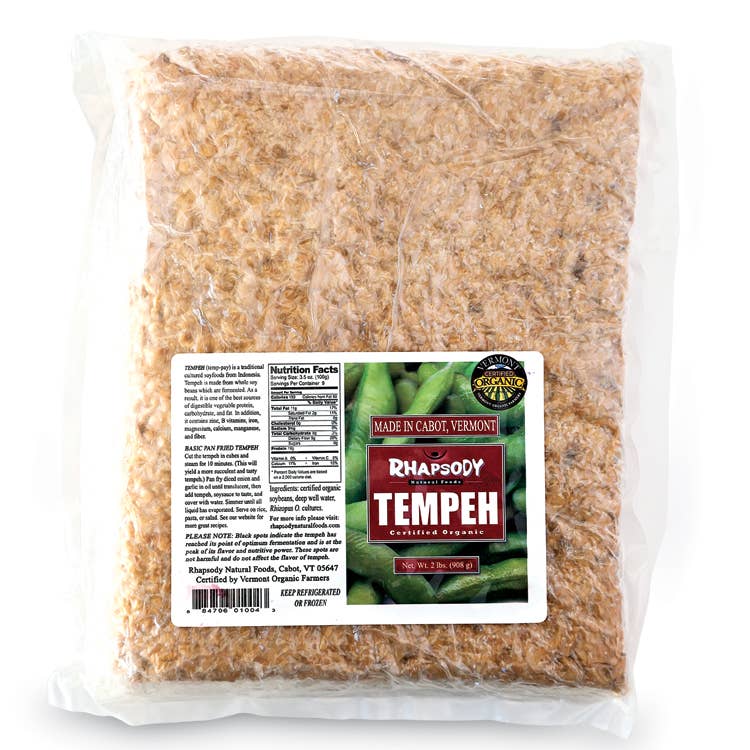
Tempting Tempeh
Though tempeh is often relegated in America to health food stores, in Indonesia, where it originates, this fermented soybean cake has been a dietary staple for centuries. Dense, firm, and protein-packed, with a whitish-tan color and an earthy, nutty taste, tempeh is sold in cakes wrapped in banana leaves in markets throughout Indonesia, where it stars in dishes like sambal goreng tempe, fried tempeh in spicy tomato sauce (see page 90 for recipe). To produce it, fresh soybeans are boiled and then milled to remove their skins. The skinned beans split into two domed halves, which are par-cooked before being innoculated with a starter culture containing the edible mold Rhizopus oligosporus. The tempeh is wrapped and left to ferment for a few days in a warm location, where a downy, sometimes black-flecked mold develops around the beans, binding them together. In the United States, it is sold in vacuum-packed, rectangular cakes, which sometimes include added flavorings. Mild-tasting and pleasantly chewy, tempeh absorbs the flavors with which you cook it. Indonesians marinate it in garlic, fry it, and coat it in chile paste and fresh lemon basil; they glaze it in a spicy-sweet chile-tamarind sauce fragranced with gingery galangal; and they simmer it in coconut milk curries. While we like to prepare it in all of these ways, we’ve found that tempeh also lends itself to Western preparations. We fry, crumble, and toss it with lemon and salt for a flavorful salad garnish. And we pan-fry slabs and pile them on rye with sauerkraut, Russian dressing, and melted Swiss for an excellent meatless riff on a Reuben sandwich.
Keep Reading
Continue to Next Story










